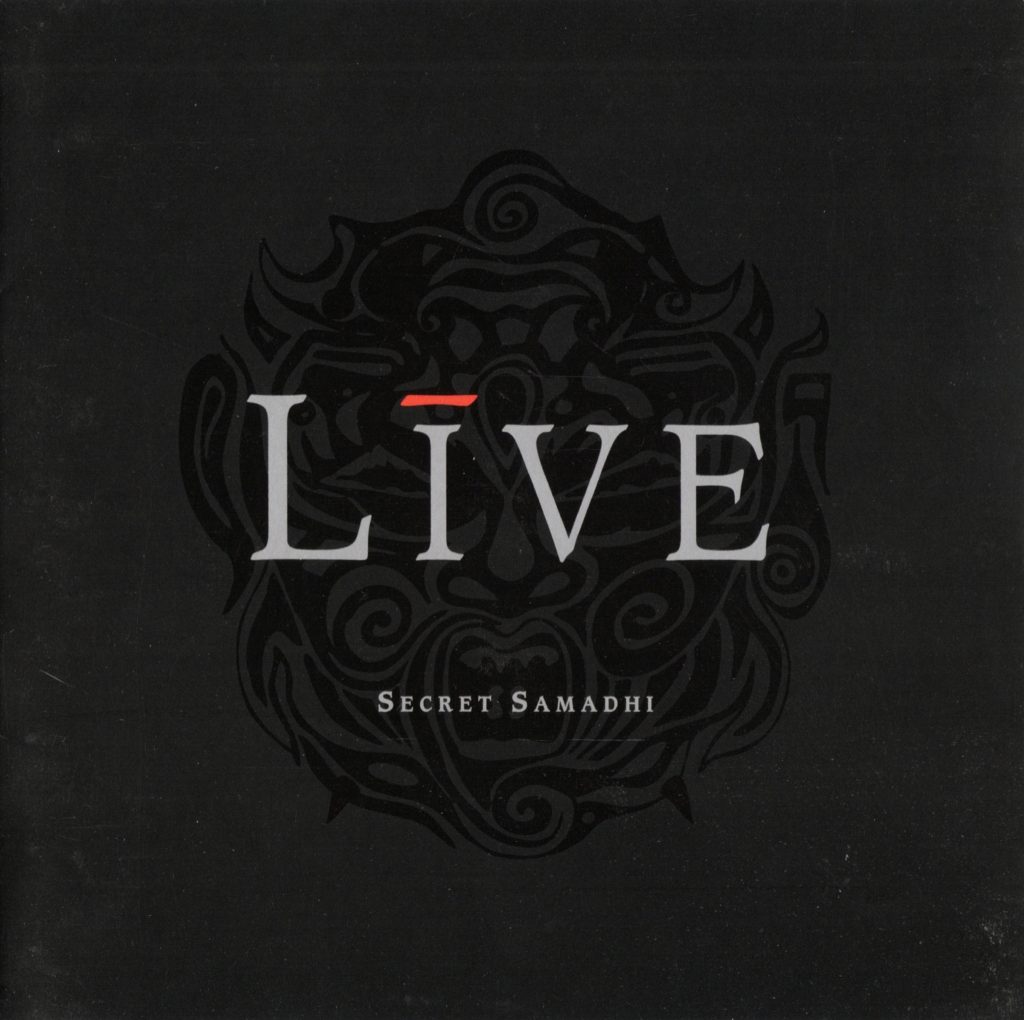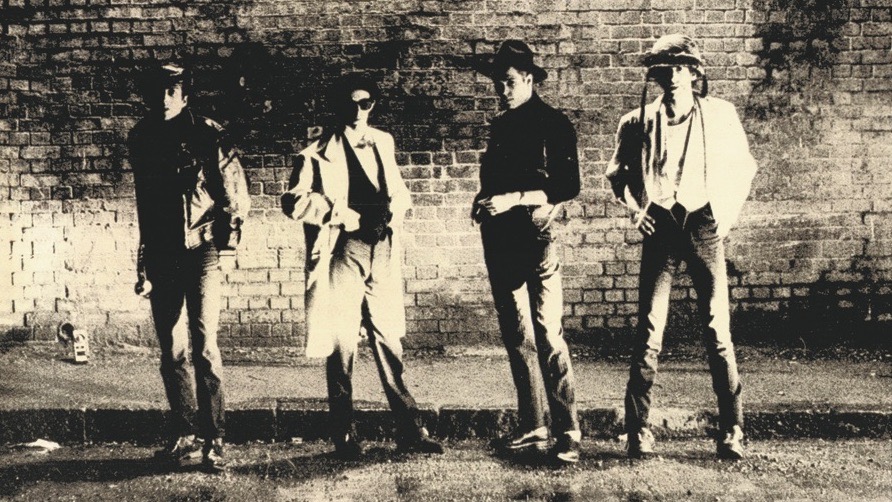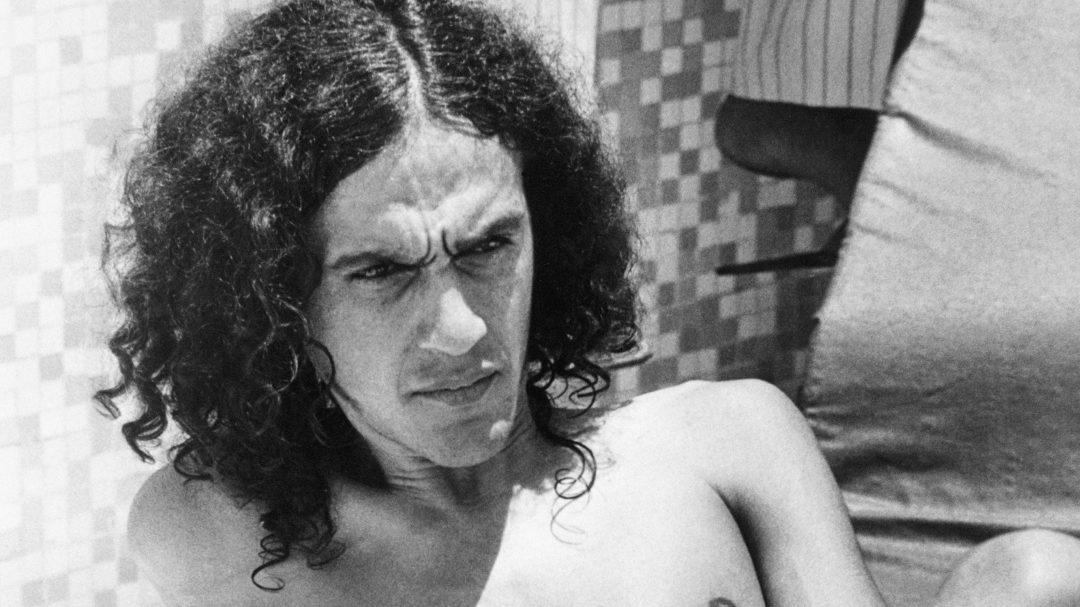
The York, Pennsylvania quartet, Līve, achieved a rarified level of stardom with their 1994 album, Throwing Copper. Its highly-anticipated follow-up found the band struggling with the burden of its own success on a set of tracks that are both undercooked and overproduced.
The second week of 1997 looms large in the memory of those who grew up in Flagstaff, Arizona during the nineties. That January, a major winter storm – the largest in decades – swept across Northern Arizona, burying the town under several feet of snow. Public schools were shut down for an entire week, and Northern Arizona University was forced to cancel classes for the first time in over twenty years.
As a senior in high school, the prospect of a week off was little short of thrilling. Having a good friend with access to a truck and his parents’ snowblower also meant that it was potentially profitable. In spite of all of this excitement, the one thing that truly occupied my mind throughout the week was the surprise release of a new music video by my favorite band. I was lucky enough to be watching MTV during the world premiere for Līve’s new single, “Lakini’s Juice,” and managed to capture it on VHS tape during a repeat play an hour later. By the end of Snowpocalypse 1997, I must have watched the clip at least two dozen times.
Līve had become a relatively-successful entity with their 1991 debut, Mental Jewelry. Having caught the Buzz Bin-certified video for “Operation Spirit (The Tyranny of Tradition)” in early 1992, twelve-year-old me talked my mom into taking a trek to a since-closed North Phoenix branch of Zia Records, where I laid out $7.99, plus tax, to buy a copy of Mental Jewelry on cassette. It was the first album that I ever purchased for myself with my own money. I loved it, and the naive mysticism of its worldview aside, I can still see why it resonated for a younger version of myself.
Of course, Mental Jewelry would ultimately be eclipsed by Līve’s second album, 1994’s Throwing Copper, which I stumbled upon during one of my then-weekly visits to the Flagstaff Mall’s long-gone Wherehouse store that spring. In a pre-internet era, I had no idea that the band had even recorded a second album. My friends – who were all generally in-the-know about each others’ musical purchases – had no clue as to why I was so excited to fork over $17.03 ($15.99, plus tax: a legendary number among our circle) to buy a CD by a band that they had never even heard of. Somewhere on the way to Throwing Copper selling over eight million copies, I would be vindicated.
Back to early 1997: I had heard rumblings that Līve were working on the follow-up to Throwing Copper in late-1996, but no concrete details would materialize until the video premiere of “Lakini’s Juice.” The band’s third album would be titled Secret Samadhi, and it was scheduled to arrive five weeks later. I literally circled its release date – February 18th, 1997 – on my wall calendar. For a music-crazed seventeen-year-old, waiting five weeks for your favorite band to release a confirmed album verged on torture. I had become a “release day buyer” the previous fall, but none of the albums that I purchased that autumn – R.E.M.’s New Adventures in Hi-Fi, They Might be Giants’ Factory Showroom, Weezer’s Pinkerton – were officially announced with as much lead time, or were, for me, as highly anticipated as Secret Samadhi.
In the meantime, I had the album’s advance single to help bide the time. “Lakini’s Juice” was decidedly thornier than any previous Līve song. Throwing Copper had turned the band’s two most frequently-cited influences, R.E.M. and U2, into a multi-platinum sensation, by merging the jangly American alt-rock of the former with the stadium-sized ambition of the latter. By contrast, “Lakini” was chugging, aggressive, and dark. I thought it was great; and admittedly, I didn’t hate it as I returned to it this week. While certain elements of the track weren’t too far removed from the lunkheaded Nu-Metal that would peak a year or two later, there is an intensity and nuance to “Lakini” – particularly in its effective string arrangement – that remain at least mildly intriguing.
Eventually, February 18th arrived. I talked my mom into letting me take the day off from school in order to go buy the album, and I advocated for buying it at Target, knowing that it would open a couple of hours before any of Flagstaff’s record stores. The three copies that we purchased – one for myself, and one for each of my two brothers, who were also fans – would play at least some part in the album debuting at #1 on the Billboard charts the following week.
Here’s where I need to depart from narrative, at least a bit. Things got much more complicated once I actually heard the album. The truth is, I’ve always had a very complicated relationship with Secret Samadhi. Though I would defend it vociferously to anyone who spoke ill of it, I was certainly disappointed with the album, despite liking much of it. Whether out of pride, stubbornness, or loyalty, I never really admitted this publicly at the time – to the point of where the few close friends that I’ve maintained since high school might even question this admission as little more than an attempt by a noted music snob to save face for his youthful transgressions.
Perhaps more than anything else, I didn’t articulate my disappointment with Secret Samadhi because, at the time, I didn’t know how to. Though I hardly ran with a gang of simpletons – at least by that point of high school – it seemed like, within our circle, things were considered to be either varying degrees of “good,” or were outright “bad.” I returned to the album for the first meaningful time in two decades this week, in an attempt to bridge the gap between those classifications, and subsequently, between teenage me and forty-something me.
First off, the elephant in the room when discussing Līve is frontman, Ed Kowalczyk. From the outset of the band’s career, Kowalczyk was both the band’s strength and their Achilles heel: a charismatic performer, commanding vocalist, and lyricist of… let’s go with inconsistent quality. Mental Jewelry sounded very much like the work of the twenty-year-old songwriter that it actually was: naively optimistic about some aspects of the world, semi-articulately frustrated with others, and generally forgivable while occasionally (unintentionally) hilarious. Throwing Copper was a similarly-mixed bag, but the increased confidence in Kowalczyk’s delivery made for several moments that felt almost poignant – at least if you squinted.
Famously, Secret Samadhi would provide more than a few lyrical doozies, even for a band whose biggest hit had awkwardly jackknifed the word “placenta” into its second line. The album’s opener, “Rattlesnake,” provides this absolute gem of a first verse:
Let’s go hang out in a mall, or a morgue
A smorgasboard
Let’s go hang out in a church
We’ll go find Lurch
Then we’ll haul ass down through the abbey
While Throwing Copper had often tried to substitute lyrical obtuseness for profundity (ex. “The felix of your truth will always break it/And the iris of your eye, always shake it“), it did so in songs that generally carried a certain degree of narrative, relatability, and/or emotional resonance. Far too much of Secret Samadhi is as aimless as the disaffected youths detailed in the above-quoted verse, and when the sentiment of the chorus amounts to “It’s a crazy, crazy mixed-up town/It’s the rattlesnake I fear,” the listener is left grasping for a point, let alone an ethos. What is that you say? “Who needs an ethos outlined in a rock song?” Yeah, I tend to agree, but when a band presents itself as seriously as Līve did – I distinctly remember being first made aware of the word “pretentious” from reading reviews of the group – you can’t blame listeners or critics for expecting a more substantive payoff than, “In another place in another time/I’d be driving trucks, my dear/I’d be skinning hunted deer.”
These lyrical clunkers would plague virtually every song on Secret Samadhi. From “this puke stinks like beer” (“Century”), to the “little swami” and “bagels in my oven” of “Insomnia and the Hole in the Universe,” to the incest-themed second single, “Freaks,” Kowalczyk is in rare form throughout. Of course, he’s also quick to drop virtually substance-free references to the likes of Jesco White, Aldous Huxley, and Henry Miller, just to remind listeners that he had read a few more books than his average high school classmate.
I could go on for some time about Ed Kowalczyk’s fumbling poetry, but regrettably, he’s not the only one to blame for Secret Samadhi‘s shortcomings. Of near-equal culpability are Kowalczyk’s bandmates, whose contributions are wholly befitting of the ham-fisted lyrics. On Mental Jewelry, Līve had led with their rhythm section – bassist Patrick Dahlheimer and drummer Chad Gracey. Their nimbleness gave the debut a propulsive quality, one that frequently built a decent amount of tension, and could be, dare I say, funky (keep in mind that it was produced by a former member of Talking Heads).
Throwing Copper added several new shades to the band’s sound, ones largely informed by the aforementioned U2 and R.E.M., along with the plethora of acts vying for attention in the so-called “post-grunge” landscape of mid-nineties alternative rock. Whereas Mental Jewelry was often about rhythm, Throwing Copper was centered upon melody and dynamics – often following the soft-LOUD-soft-LOUD pattern that dominated contemporary rock radio. The success of this approach was clearly confirmed by Throwing Copper‘s several hit singles, and the album’s near diamond-selling status.
On Secret Samadhi, that soft-LOUD dynamic reigns to an almost parodic degree. Aside from the requisite ballad (“Turn My Head”), a vaguely punk-inspired rave up (“Heropsychodreamer”), and a somewhat-breezy toss-off (“Merica”), every track on Samadhi follows an identical formula. While these dynamic shifts helped to bring a certain degree of theatrics to the proceedings – and I can confirm that peak-era Līve could put on a solid show – they ultimately did little to hide the fact that a significant number of these songs feel half-baked. For the most part, they lack either the dexterity of Mental Jewelry, or the hooks of Throwing Copper.
So, who else was to blame? After having overseen their first two albums, Jerry Harrison was dismissed as Līve’s producer. Replacing him was Jay Healy, who had previously worked with the band on a collection of pre-Mental Jewelry demos; in a potentially revealing side note, the group themselves were listed as co-producers. Also, instead of the pastoral, rural Minnesota setting of Pachyderm Studios – the site where Throwing Copper, as well as Nirvana’s In Utero and PJ Harvey’s Rid of Me had been committed to tape – Samadhi was recorded at Hit Factory (New York), South Beach Studios (Miami), and the Record Plant (Los Angeles).
If these studios had character, none of it made it onto the finished album. While the dynamic range of its composition kept Samadhi from being totally “brickwalled,” there is a sterility – one might generously call it “professionalism” – to the entire record that makes for a shockingly static listening experience. When combined with needlessly long track lengths – half either approach or surpass the five-minute mark – and often-plodding tempos, it makes Samadhi feel much longer than its fifty-three-minute run-time.
All of these factors made for an album that seemed destined to become a disappointing follow-up to a blockbuster. Though it debuted at #1, and would eventually go double platinum, Secret Samadhi was a definitive letdown, both commercially and critically. Contemporary reviews seemed eager – at least to a devoted fan – to take one of the best-selling rock acts of the mid-nineties down a peg; however, reading them today, critics tended to damn the album with faint praise, rather than dismiss it outright.
Either way, at least to this fan, Secret Samadhi represented the beginning of the end of my relationship with a band that I had once loved intensely. While like many fans, my evolution as a listener could be more accurately described as “glacial” rather than rapid, by the end of 1997, even I felt that Līve looked passé when viewed through the lens of a band like Radiohead. This was laid bare when I saw the former group perform in Phoenix in September of that year, while deeply immersed in the latter band’s utterly game-changing masterstroke, OK Computer.
My stubborn loyalty would lead me not only to purchase Secret Samadhi‘s follow-up (1999’s The Distance to Here, which I recalled liking more, before being reminded that its first single is literally called “The Dolphin’s Cry”), and 2001’s absolutely disastrous V; had the latter not been in a trunk-mounted CD changer the one time that I listened to it in full, I may have thrown it into the desert somewhere between Phoenix and Flagstaff. Instead, I let my older brother borrow it, and never asked for it back.
In the twenty years since, I had not intentionally listened to the band until last week, while preparing for this review. I skipped Mental Jewelry, and went straight to Throwing Copper. It’s fine. There are several moments that I wince at, but I suspect that is as much a product of remembering my own youthful fanaticism for it as it is a genuine reaction to the music. To be fully honest, I’m not sure that I could objectively rate Throwing Copper. It’s like looking through a high school yearbook: I’m content to pull it out every 5-10 years, laugh a bit, cringe a bit, and then put it back on the shelf.
Secret Samadhi is a different story. The things that I disliked about it nearly twenty-five years ago still bugged me, even if the reaction was less visceral. It’s the moments that I once enjoyed, or at least excused, that really got on my nerves. Put simply: the bad parts are still bad; the other parts are just boring, which is somehow a far greater sin. Having forced myself to not only listen to Samadhi multiple times, but also to have to spend a week thinking about it, I seriously doubt that I’ll ever return to the album again.
As I mentioned earlier, in the twenty years between the release of V and last week, I never deliberately listened to Līve. However, roughly eight years after Secret Samadhi was released, I did have an easy opportunity to see the band perform. In August 2005 – almost exactly ten years after the first time that I saw them in concert – Līve played a free show for ticket holders, after a Phillies/Diamondbacks game at Chase Field in Phoenix. I wouldn’t have stuck around, even if my Phillies hadn’t lost the game in a shutout – their lineup dominated by Brandon Webb. It was yet another disappointment, late in what would be the team’s twelfth consecutive season without a playoff berth.
Three years later, the Phillies won the World Series. Twenty years of fandom – stretching back to when I was an eight-year-old living in the Philadelphia exurbs – finally paid off. The thirteen years that have since passed have brought mostly disappointment, and a few seasons of borderline misery, but I’ve remained intensely loyal. I always remain loyal. Well, almost always.





I appreciated this trip down memory lane. If you ever feel like scratching the itch, I found Birds of Pray to have some decent tracks I still have in my workout mix: Out to Dry, Life Marches On. Sanctity of Dreams
While my overall feelings towards this album are a bit warmer than yours, I so appreciate your thoughts on it. This record is exhibit A for how one could come to care for a less-than-stellar record in the days of your listening being limited by what you owned. I paid $15 for the CD and so I will listen to it. Years removed from that, I can see all of the albums flaws and, on most listenings, overlook them and enjoy it.
Sometimes I think that’s better than the way things are now- isn’t enjoying something better than dismissing it? We can all use more things we enjoy in our life. But if a record like this came out today it would never get a second listen from me.
I was a loyalty purchaser as well and I managed to stick with them through Birds of Pray (ugh) though I got diminishing returns as a got to college and had less time to visit subpar releases over and over again.
Have you listened to Throwing Copper recently? Then Samadhi? Samadhi outweighs it by quite a bit, the former having quite a bit of filler and being drenched in the tropes and sounds of the time. Samadhi breaks away from that and becomes something so much more over the course of multiple tracks. All Over You? An overrating, stupidly lumbering, and plodding track. The only 2 that emerge completely unscathed are I Alone and Lightning Crashes. Now compare those two to let’s say Lakini’s Juice and Freaks. I’d argue that Lakini’s Juice could 2 v 1 both of those tracks if you remove nostalgia from the equation which, after all these years, I have. Paired with Freaks (a track that’s maybe 80 percent as good as Lakini’s Juice) it wipes the floor with both of those tracks. What’s left? For the debut, not much. Maybe Selling the Drama? Pretty good, sure. Another pretty good track – Dam at Otter Creek. For Samadhi? Oh boy, do we got more. We got Turn My Head. We got Graze. We got Century. Just the production level on these tracks and scope of all the different influences brought to them outweigh the previous outing by a good margin. The guitars in them sound HEAVIER, the art in them more avant, the concept as a whole, full and dark, far more coherent than it’s predecessor. Look at Unsheathed, a totally unhinged and beautiful track equal parts light and dark. Beautiful and heavy. Sane and serene, tribal and raw. Also, deep. Check the words. I bet live that track was absolutely killer. There are still other tracks from Secret Samadhi I could go on about but I’ll stop here. After all these years, a re-listen with a neutral mindset will show you that SS outweighs Throwing Copper by a considerable margin when each is taken in as a whole album.